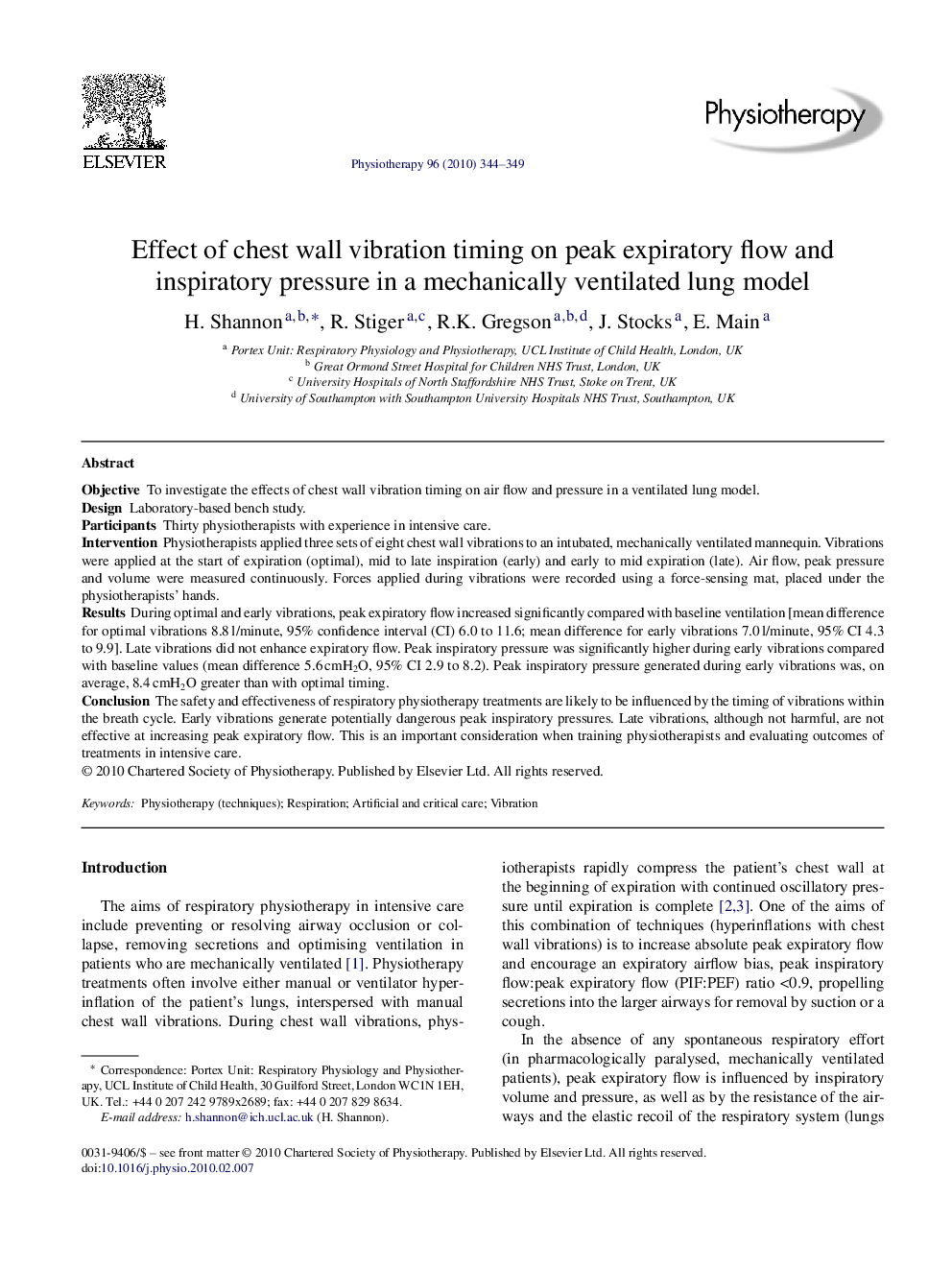| کد مقاله | کد نشریه | سال انتشار | مقاله انگلیسی | نسخه تمام متن |
|---|---|---|---|---|
| 2627391 | 1136074 | 2010 | 6 صفحه PDF | دانلود رایگان |

ObjectiveTo investigate the effects of chest wall vibration timing on air flow and pressure in a ventilated lung model.DesignLaboratory-based bench study.ParticipantsThirty physiotherapists with experience in intensive care.InterventionPhysiotherapists applied three sets of eight chest wall vibrations to an intubated, mechanically ventilated mannequin. Vibrations were applied at the start of expiration (optimal), mid to late inspiration (early) and early to mid expiration (late). Air flow, peak pressure and volume were measured continuously. Forces applied during vibrations were recorded using a force-sensing mat, placed under the physiotherapists’ hands.ResultsDuring optimal and early vibrations, peak expiratory flow increased significantly compared with baseline ventilation [mean difference for optimal vibrations 8.8 l/minute, 95% confidence interval (CI) 6.0 to 11.6; mean difference for early vibrations 7.0 l/minute, 95% CI 4.3 to 9.9]. Late vibrations did not enhance expiratory flow. Peak inspiratory pressure was significantly higher during early vibrations compared with baseline values (mean difference 5.6 cmH2O, 95% CI 2.9 to 8.2). Peak inspiratory pressure generated during early vibrations was, on average, 8.4 cmH2O greater than with optimal timing.ConclusionThe safety and effectiveness of respiratory physiotherapy treatments are likely to be influenced by the timing of vibrations within the breath cycle. Early vibrations generate potentially dangerous peak inspiratory pressures. Late vibrations, although not harmful, are not effective at increasing peak expiratory flow. This is an important consideration when training physiotherapists and evaluating outcomes of treatments in intensive care.
Journal: Physiotherapy - Volume 96, Issue 4, December 2010, Pages 344–349